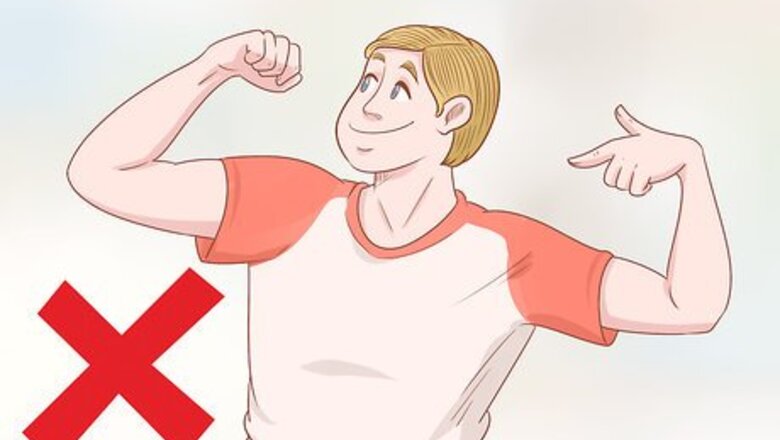
views
Starting Out
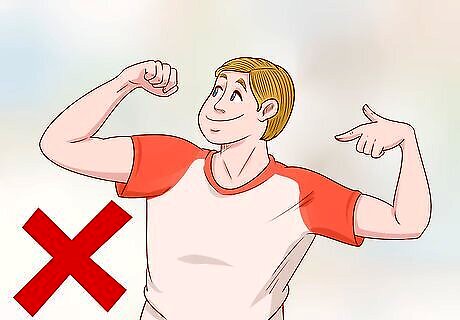
Don’t develop an ego. Having a high draw weight isn’t a bragging point and anyone who thinks it is probably isn’t a good archer. A person shooting a 30# bow into the gold ring every time is much more impressive than a person struggling with a 60# bow and only being able to pull it back a few times. This is more common among people who want to look impressive and show off. Do not do this if your goal is to improve at archery.
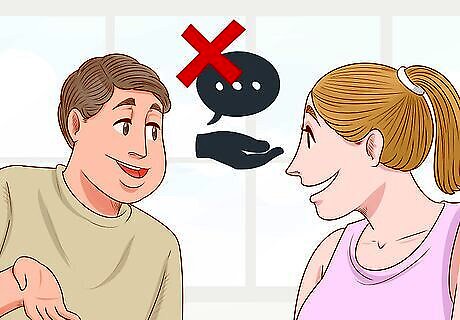
Avoid bad advice that overestimates what you should use. Some people will suggest that you start off with as high a draw weight as possible. However, if you are sky drawing, having to use all your effort to draw the bow back, and shaking when you try to aim, do you think you’ll enjoy archery? Of course not! Go with what you’re comfortable with and overestimate your limits. Some of this inaccurate information comes from compound archers. Compounds have a let-off feature where at full draw, you are only holding about 15-20% of the weight. If you have a 70# compound bow, you are only holding 11# at full draw. If you have a 70# recurve, you will be holding 70# the whole time. If a person or a chart suggests a draw weight to you solely based on age, do not trust them/it. Your age is not be the sole determiner of your ability to pull back a bow.
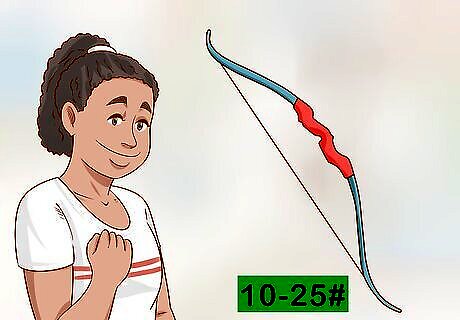
Consider your strength. Of course, body frame does impact what your draw weight should be, but not as much as other sports. Archery uses muscles rarely exercised normally and even an extremely fit person should not start off at more than 35#. Archery uses muscles in your back such as the rhomboids, trapezius, and latissimus dorsi as well as shoulder muscle groups. If you are a beginner adult archer, start off at 15-25# depending on your physicality and how often you will shoot. Beginning children should typically start at 10-20#.
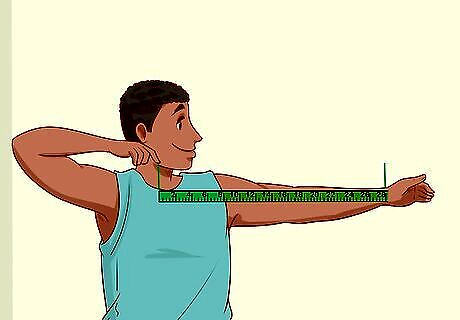
Factor in your draw length. All recurves are manufactured to an industry standard of the 28 inch draw. This means that if you have a 28-inch draw length, you will pull exactly 30# on a 30# bow. However, if your draw length is longer, you will pull more and you will pull less if your draw length is shorter than 28 in. Calculate your draw length by measuring your wingspan (from the tip of each middle finger) and dividing by 2.5. The increase or decrease in poundage is typically estimated at about 2.5# per inch over or under 28 in. However, a bow scale will provide more accuracy. For example, if your draw length is 25 inches, you will draw about 24# on a 30# bow. If your draw length is over 30 inches, get a taller bow around 68-72 inches to prevent stacking, an exponential increase in draw weight after a bow is pulled back far enough.

Try out a bow for yourself. Go to a range or a club and rent a bow or take a class. You'll learn proper form while also feeling each draw weight out and seeing what's right for you. You can't really know until you try, and this helps you choose the right bow the first time. Use it for more than 30 minutes to really know if you can handle the draw weight many times over and over again. In a shop, if the seller tries their best to convince you that a bow they have will be perfect for you, even if it's not what you're looking for, they are most likely just trying to make a sale. If you are looking for a takedown recurve, for example, do not let a salesperson push you into buying a compound bow. You might find the bow easy to draw back once, but how would you feel doing it dozens of times? Make sure to not overestimate yourself.

Think about the future. What do you want to accomplish as an archer? Do you want to hunt or shoot targets? Having a goal will make defining your bow and accessories much easier. If you would like to move up in draw weights more easily, consider a takedown bow or ILF riser if you want to do target archery.
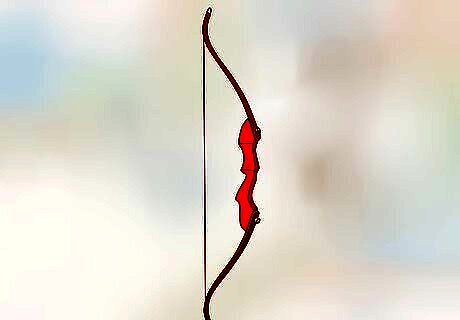
Buy the right bow for you. It's essential that you don't buy what worked for someone else, but what is the right fit for you. Think about your discipline, riser material, size (height of the bow), eye dominance and potential accessories you might want to add. This might take some time, so don't rush the process, especially if you can rent from a club in the time being. You don't need a high-end set of limbs to start, since you will probably move up in a couple of months. However, a quality riser at about $300-$500 can last you forever, and you won't grow out of it unless you decide to compete in tournaments.

Know if your draw weight is too high. You might have started already with a bow that's too heavy for you to draw back. If you need to point it at the sky (sky-drawing), collapse your bow shoulder inwards, or start shaking without even being able to hold the string for a couple of seconds, you started too high. A test for this is to bend your waist and point the bow at the ground with your bow hand near the side of your knee. Draw the bow to your anchor point and if you can't do this, you are over-bowed. You will want to either buy a new bow or limbs if it is a takedown recurve. If you started at about 30# and it's too high, you can recover from this (although not recommended) with practice and exercises.
Moving Up in Draw Weight
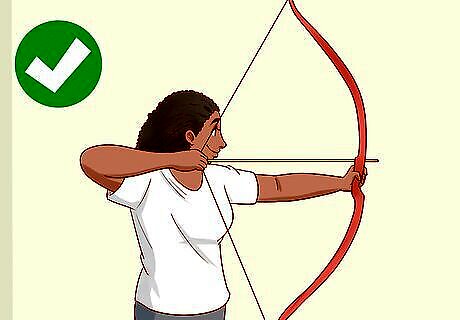
Know when you’re ready. Be able to hold your bow steady for a whole minute and shoot accurately afterward. Shoot for an hour and see if you feel fatigued. A little soreness in your muscles is fine, especially if you normally shoot for shorter periods, but feeling like you want to collapse means you definitely aren't ready to increase your draw weight. If you're shaking like a leaf after holding for 30 seconds, do not move up. Get someone else's opinion such as a coach or experienced recurve archer. (Not compound, not longbow, and not horse-bow). Try sitting on a chair and lifting your feet off the ground. If you can pull the string to your anchor point, you are probably good to move up some weight.
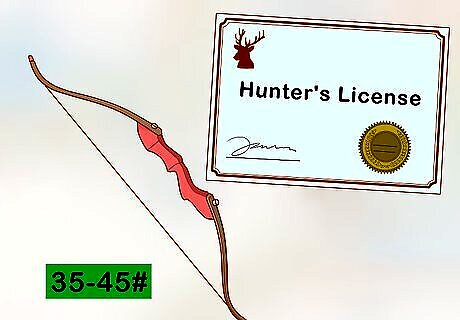
Think about whether you have a purpose for moving up in draw weight. Olympic archers generally only use about 40# bows for shooting 70 meters. You should have a reason to justify increasing your draw weight such as a legal requirement for hunting or shooting further distances. 35# is more than enough for a hobby or backyard shooting. In some areas, you will need a 35-45# for hunting deer. If you would like to hunt elk or bear, you will need up to 55# to ensure a clean, ethical kill. Higher draw weights give you flatter trajectories and less adjustment of your sight when you shoot longer distances. You won't have to aim way over the target to account for your arrow's arc.
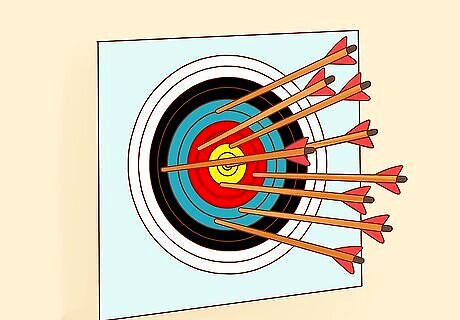
Consider how many arrows you shoot. If you only shoot 15-20 arrows a session, you can go with a 10# or 5# jump if you’d like. You don’t shoot enough times to really become fatigued by pulling back a higher draw weight. If you shoot from 80-100 arrows per session, move up by 2# or 4# if possible to have the least impact on your training. You will draw back the bow more times in succession and need to have as little change as possible to stay on the right track.
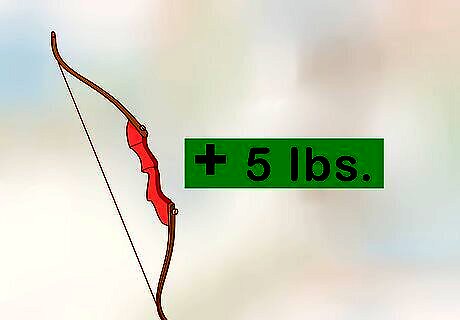
Know how many pounds to move up by. When you are just starting out, it's fine to move up by 5# or even 10# at a time. You'll adjust with some extra exercises and practice. However, above 30#, it's best to increase your draw weight by 2-5# each jump to ensure that you'll grow into the bow without losing too much time. A club may have a system to trade out limbs, cutting costs if you want to move up 2# at a time. They are also good to get general advice about your form and have good targets to shoot at.
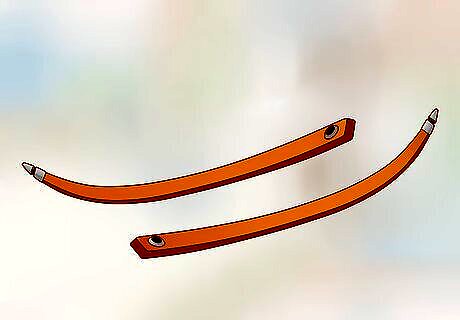
Choose a new bow or limbs. If your bow is a takedown, you can buy more limbs from the same manufacturer to fit your bow at a different draw weight. If you have an ILF (International Limb Fitting) recurve, you can match the limbs/riser with any other ILF limbs/riser out there. You may sometimes need a new riser because the old one has its limits on how much draw weight it can take. Commonly, cheaper risers max out at 35#. Consider keeping your old limbs or bow as a practice set so you can relax and practice form or warm-up using a lower draw weight.
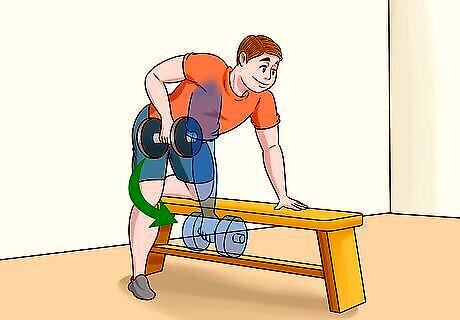
Get accustomed to the new weight. There are some exercises that you can do while adjusting to a higher draw weight. Try SPT, or Specific Physical Training which is done using a bow or anything similar (resistance bands also work). Draw back your bow for 15 seconds to your anchor point and using good form. Rest for double what you held, so in this case, you would rest for 30 seconds before starting again. Vary the amount that you will hold your bow and gradually increase it. Build shoulder muscles to help you draw your bow back. Try single arm dumbbell rows, dumbbell side lifts, and forearm planks. Use back tension. Pretend like you are pulling back the string without a bow. Squeeze your shoulder blades as if you were trying to hold a tennis ball between them. Now do this with a bow, taking most of the weight with your back to make it easier on your arms.










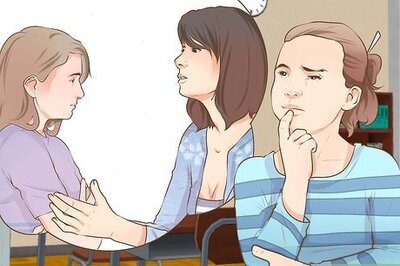


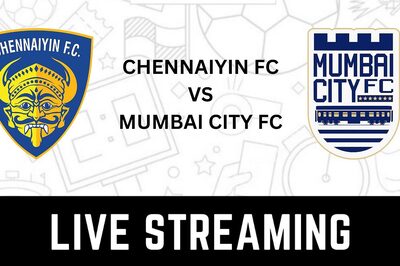
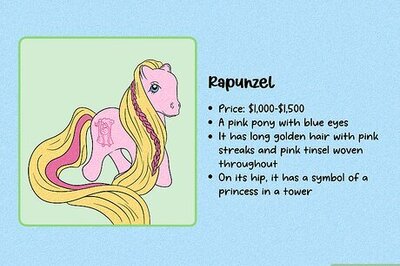



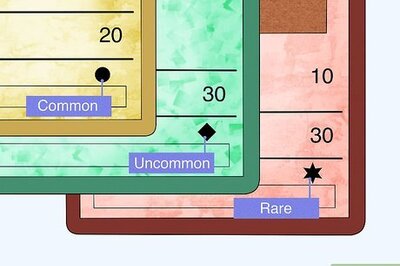

Comments
0 comment